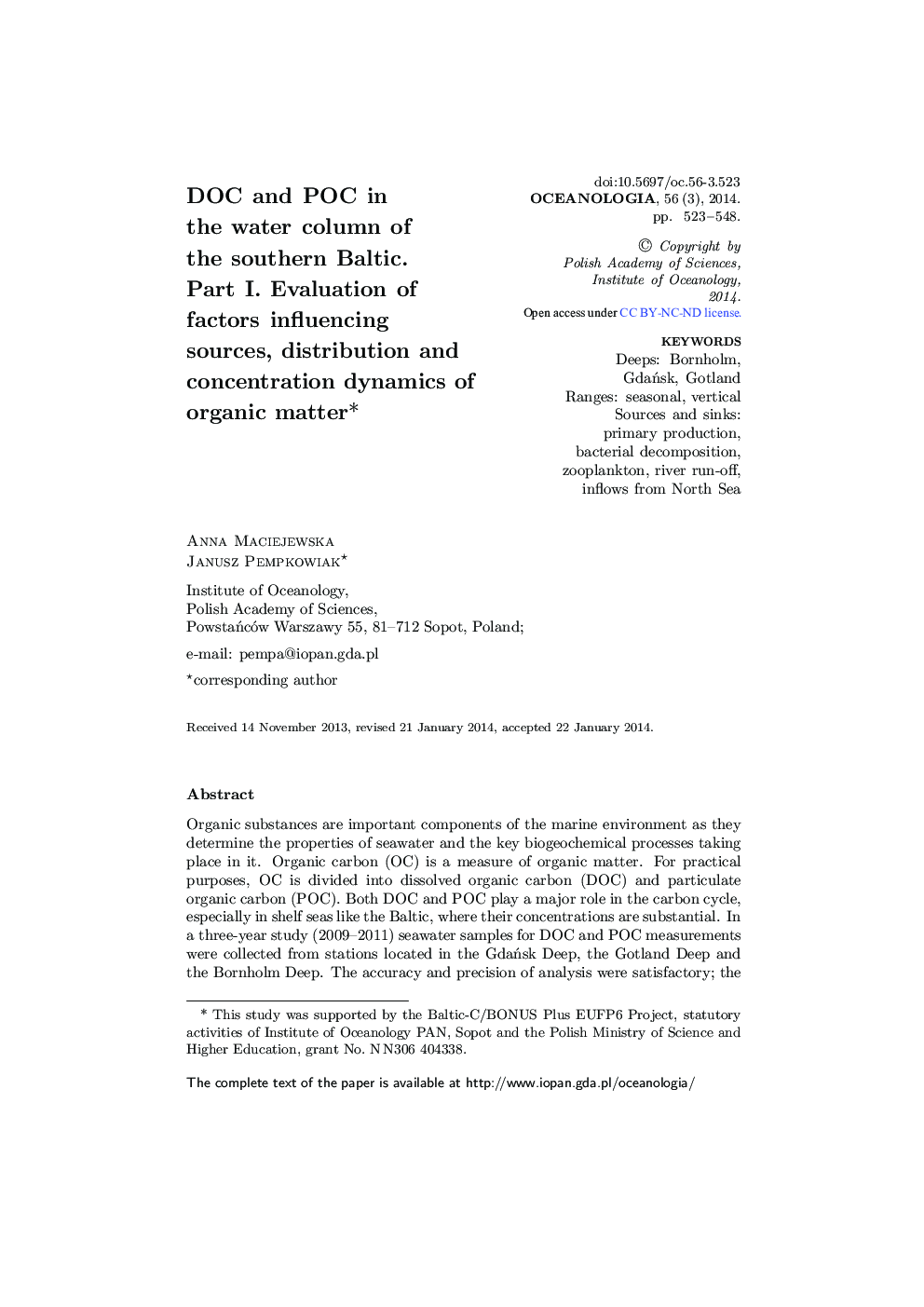| کد مقاله | کد نشریه | سال انتشار | مقاله انگلیسی | نسخه تمام متن |
|---|---|---|---|---|
| 2069691 | 1078424 | 2014 | 26 صفحه PDF | دانلود رایگان |

Organic substances are important components of the marine environment as they determine the properties of seawater and the key biogeochemical processes taking place in it. Organic carbon (OC) is a measure of organic matter. For practical purposes, OC is divided into dissolved organic carbon (DOC) and particulate organic carbon (POC). Both DOC and POC play a major role in the carbon cycle, especially in shelf seas like the Baltic, where their concentrations are substantial. In a three-year study (2009–2011) seawater samples for DOC and POC measurements were collected from stations located in the Gdańsk Deep, the Gotland Deep and the Bornholm Deep. The accuracy and precision of analysis were satisfactory; the recovery was better than 95%, and the relative standard deviation was 4% (n = 5). Concentrations of chlorophyll a, phaeopigment a, salinity, pH and temperature were also measured in the same samples. These parameters were selected as proxies of processes contributing to DOC and POC abundance.The aim of the study was to address questions regarding the vertical, horizontal and seasonal dynamics of both DOC and POC in the Baltic Sea and the factors influencing carbon concentrations. In general, the highest concentrations of both DOC and POC were recorded in the surface water layer (DOC ~ 4.7 mg dm− 3, POC ~ 0.6 mg dm− 3) as a consequence of intensive phytoplankton activity, and in the halocline layer (DOC ~ 5.1 mg dm− 3, POC ~ 0.4 mg dm− 3). The lowest DOC and POC concentrations were measured in the sub-halocline water layer, where the values did not exceed 3.5 mg dm− 3 (DOC) and 0.1 mg dm− 3 (POC). Seasonally, the highest DOC and POC concentrations were measured during the growing season: surface DOC ~ 5.0 mg dm− 3; sub-halocline DOC ~ 4.1 mg dm− 3 and surface POC ~ ∼ 0.9 mg dm− 3, sub-halocline POC ~ ∼ 0.2 mg dm− 3. The ANOVA Kruskal-Wallis test results indicate statistically significant differences among the three study sites regarding average concentrations, and concentrations in particular water layers and seasons. It shows that concentrations of DOC and POC differ in sub-basins of the Baltic Sea. The differences were attributed to the varying distances from river mouths to study sites or the different starting times and/or durations of the spring algal blooms. Statistically significant dependences were found between both DOC and POC concentrations and Chl a (phytoplankton biomass), pH (phytoplankton photosynthetic rate), pheo (zooplankton sloppy feeding), salinity (river run-off and North Sea water inflows) and water temperature (season). This was taken as proof that these factors influence DOC and POC in the study areas.
Journal: Oceanologia - Volume 56, Issue 3, June 2014, Pages 523–548